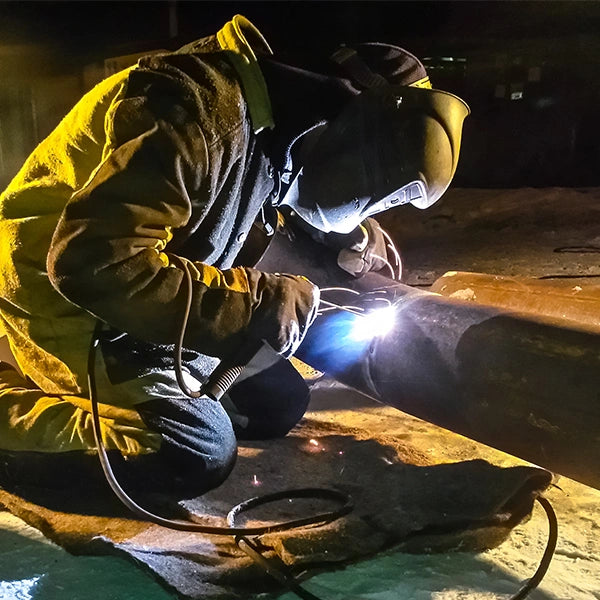Getting Welding Excellence: Introducing the Secrets of WPS Execution and Optimization
In the realm of welding, achieving quality is a quest that depends upon the thorough implementation and optimization of Welding Treatment Specifications (WPS) These foundational documents function as the foundation of welding operations, determining the parameters and treatments essential for creating high-quality welds constantly. Nonetheless, the secrets to opening the complete potential of WPS exist not just in understanding its value but likewise in understanding the intricacies of its application and optimization. By diving right into the crucial elements, strategies, challenges, and best practices connected with WPS, a globe of welding quality awaits those who are ready to discover its depths.
Significance of WPS in Welding
The Value of Welding Treatment Requirements (WPS) in the welding sector can not be overemphasized, offering as the foundation for making certain uniformity, top quality, and safety and security in welding operations. A WPS provides comprehensive directions on exactly how welding is to be executed, including vital variables such as materials, welding processes, joint layout, filler metals, preheat and interpass temperatures, welding currents, voltages, travel speeds, and much more. By adhering to a well-defined WPS, welders can maintain harmony in their job, bring about regular weld top quality throughout various jobs.

Crucial Element of WPS
Talking about the essential parts of a welding procedure requirements (WPS) is necessary for understanding its role in welding operations. One essential aspect of a WPS is the welding process specification, which outlines the specific welding processes to be made use of, such as gas tungsten arc welding (GTAW) or secured metal arc welding (SMAW) By including these vital aspects right into the WPS, welding procedures can be standard, making sure quality, effectiveness, and safety in welding procedures.
Methods for WPS Optimization

Second of all, training and credentials of welding workers according to the details needs of the WPS is extremely important. Supplying extensive training programs and guaranteeing read the full info here that welders are accredited to carry out procedures laid out in the WPS can lead to better welds and decreased rework.
In addition, leveraging innovation such as welding software and surveillance systems can help in optimizing WPS. These devices can assist in tracking variables, making sure criteria are within defined restrictions, and giving real-time feedback to welders, enabling them to make immediate changes for boosted weld high quality.
Usual Obstacles and Solutions
Dealing with obstacles in implementing the approaches for WPS optimization can impede welding operations' efficiency and quality. One common challenge is inadequate training or understanding of the welding treatment specs (WPS) amongst the welding group.
One more difficulty is the absence of correct paperwork and record-keeping, which is vital for WPS optimization. Without clear why not try these out records of welding criteria, materials utilized, and examination outcomes, it becomes tough to determine areas for renovation and make sure consistency in welding procedures. Executing a robust paperwork system, such as digital welding monitoring software, can aid enhance record-keeping and help with information analysis for continual enhancement.
In addition, inconsistent welding equipment calibration and maintenance can posture a considerable challenge to WPS optimization. Routine equipment checks, calibration, and upkeep schedules must be adhered to purely to make sure that welding parameters are properly controlled and preserved within the defined tolerances (welding WPS). By resolving these common difficulties with proactive services, welding procedures can enhance effectiveness, top quality, and overall welding excellence
Ideal Practices for WPS Execution
To ensure effective WPS implementation in welding operations, adherence to market criteria and precise interest to information are paramount. When initiating WPS application, it is crucial to start by completely recognizing the specific welding requirements of the job. This requires a comprehensive review of the welding treatment resource specifications, products to be bonded, and the ecological conditions in which the welding will certainly occur.
Once the demands are clear, the next action is to pick the ideal welding procedure that aligns with these requirements. This entails seeking advice from the pertinent codes and standards, such as those provided by the American Welding Society (AWS) or the International Organization for Standardization (ISO), to guarantee conformity and high quality.
Moreover, documenting the entire WPS implementation process is important for traceability and quality assurance. Detailed records need to be maintained pertaining to welding criteria, product prep work, interpass and preheat temperature levels, welding consumables utilized, and any type of variances from the original procedure. Regular audits and reviews of the WPS can help determine areas for improvement and make sure continuous optimization of the welding procedure.


Final Thought
In conclusion, the execution and optimization of Welding Procedure Specs (WPS) is important for achieving welding excellence. By recognizing the essential components of WPS, executing effective strategies for optimization, resolving usual obstacles, and adhering to best practices, welders can make sure premium welds and secure working problems. It is crucial for professionals in the welding market to prioritize the appropriate application of WPS to boost overall welding efficiency and attain preferred end results.
The Importance of Welding Procedure Requirements (WPS) in the welding industry can not be overstated, offering as the foundation for ensuring consistency, top quality, and security in welding operations. A WPS gives comprehensive directions on just how welding is to be carried out, including necessary variables such as products, welding processes, joint design, filler metals, interpass and preheat temperature levels, welding currents, voltages, travel speeds, and much more. One vital aspect of a WPS is the welding process requirements, which lays out the details welding procedures to be made use of, such as gas tungsten arc welding (GTAW) or secured metal arc welding (SMAW) By integrating these essential elements into the WPS, welding treatments can be standard, making sure top quality, performance, and security in welding procedures.
It is critical for professionals in the welding industry to prioritize the proper implementation of WPS to enhance overall welding performance and achieve desired outcomes.